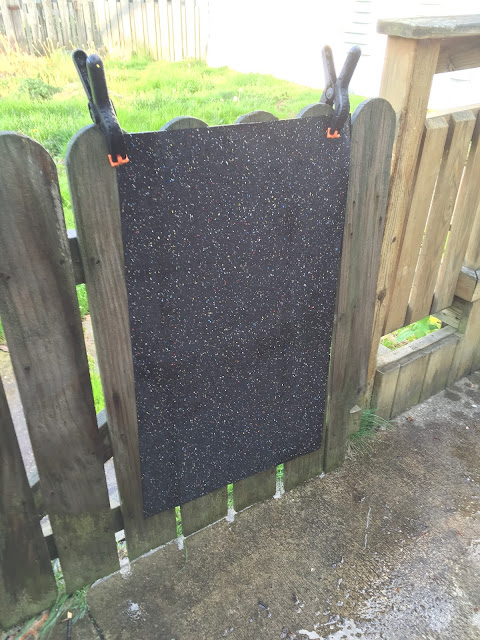But fear not! There has been some small progress to report.
In places were there wouldn't be a raised gravel profile typical of mainline track, I plan use a rubber sheeting as roadbed material for the flat yards, industry or sidings. I first used this material in my Scenery Test Module and a year later I've found no issues with materials flaking off or becoming unglued to the rubber sheet. As for it's sound qualities, it blows cork roadbed on plywood or "noisy" foam out of the water in sound deadening tests when glued down with adhesive caulk. I'm even considering using it under cork or homasote roadbed for areas where there will be a ballast profile. It makes that much of a difference to my ears on foam benchwork.
Luckily I came across a ton of this material for free when I worked for the local newspaper. The giant rolls of newsprint the press room received on semi-trailers used this rubber sheeting from Allegheny Industrial Associates called a Transmat to prevent the rolls from shifting around inside the trailer. After unloading the trailers this rubber sheeting was unwanted by the truck drivers and was piled up in the dock until thrown away or taken by my co-workers for various home uses. Typically around 2' by 3' in size and a 1/8" thick, I originally used it to cover the back cargo area of my old Jeep until I realized it could be used for model train roadbed! After that epiphany I collected as much as I could before the printing operation was shut down and moved to a neighboring newspaper.
I'm glad I had the forethought then because now years later I'm ready to use it!
First off I needed to clean a few pieces of rubber sheeting I'll use for this first phase of track laying. The floors of semi-trailers are really dirty so a good hosing down was in order.
 |
| Bath time |
 |
| Hanging them out to dry |
 |
| Track sized strips. |
Since the rubber material was already a little tricky to cut and I had plenty of it, I plan on just cutting the shapes I need directly out of the sheets. Truthfully I did slot one strip, and said screw that idea, it was way too time consuming with a knife or scissors...
As a side note, one of the few things I discovered that could mark the rubber material for cut lines and track center lines was a white Prismacolor pencil I originally bought for making chalk marks on freight cars.
 |
| One pencil, many hobby uses. |
I followed the same procedure gluing the rubber sheeting down as I did in my Scenery Test Module using DAP Clear Kitchen & Bath Adhesive Sealant.
A small kitchen dough roller (now permanently acquired for this task) was used to make sure the rubber sheet was applied and flat.
 |
| Glued in place. |



Chris,
ReplyDeleteGlad to see there is progress on your layout, even in the summer months. I hope you have enough of that Transmat to get the layout done! Will have to have you and Brendan over after I get back from the National Train Show event.
Happy Independence Day!
Tim
I should have enough Transmat for one layout. Have fun in Indy!
DeleteGood news is if you run out and can't get anymore mats at the right price, you can buy them online. Bad news is new ones are $10-12 each.
ReplyDeleteCurious to see how those work out and if they would work for spiking better than the topper tape I was experimenting with.
The rubber sheeting is very heavy, I'd be afraid to see shipping costs. I should have enough but I've thought if you asked around truck terminals or warehouses, some might have piles they don't want.
DeleteI did do a small test with spiking rails to wood ties on a glued down piece of Transmat. I was surprised to see it hold spikes better than I thought. A year later and the spikes were still tight.